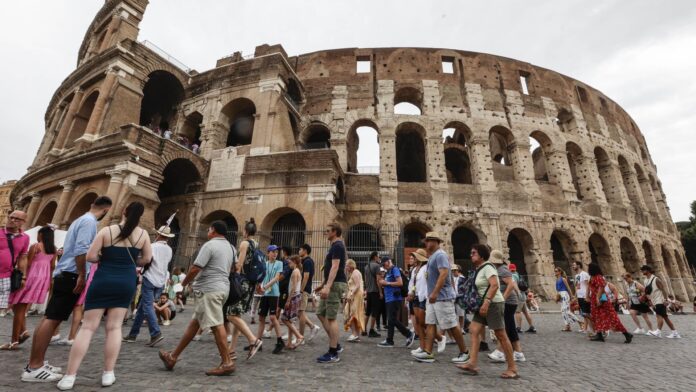Spending on travel and entertainment came roaring back in the second quarter, and it wasn’t just consumers making the purchases, according to the latest results from American Express . The company said consumer spending in the category topped pre- Covid pandemic levels for the first time in April. Notably, there also was a significant uptick in corporate travel. The results were good enough for AmEx to raise its revenue forecast, and the company’s shares jumped more than 5% on the news . AmEx expects revenue to rise between 23% and 25% this year, up from an earlier forecast of 18% to 20%. Analysts surveyed by Refinitiv were calling for 19% revenue growth this year. Still, the company’s earnings forecast remains the same. AmEx expects to post a profit of $9.25 to $9.65 per share, which is below the $9.83 per share analysts anticipated. The results are yet another example of the conflicting headlines investors are seeing as they weigh the likelihood of a recession. Decades-high inflation is forcing the Federal Reserve to raise rates to cool off the economy. At the same time, pent-up consumer demand, particularly for experiences like travel, concerts and other entertainment, has many spending freely. In the latest quarter, AmEx said overall card spending soared 30% on a currency-neutral basis thanks to a combination of robust demand, and, of course, rising prices for so many goods and services these days. Spending by millennial and Gen Z consumers was especially robust, and jumped almost 50%, the company said. In the second quarter, AmEx earned $1.96 billion, or $2.57 per share, on revenue of $13.4 billion. That compared with average earnings estimates of $2.41 per share on revenue of $12.5 billion from Refinitiv. Revenue was up 31% from a year ago. AmEx earned $2.28 billion, or $2.80 per share, in the second quarter of 2021. Weighing on AmEx’s performance was the need to add $410 million as a provision for credit losses. Last year, it recorded a $606 million benefit. Consumers also cashed in the rewards points they earned to stretch their dollars further. That drove up expenses by nearly a third to $10.4 billion.
© heardonwallstreet.com


